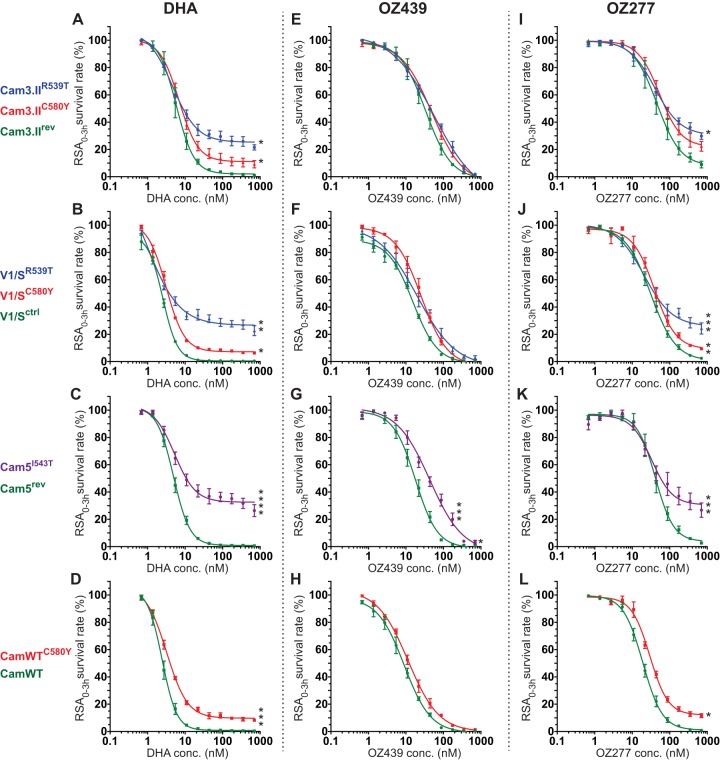FIG 2 .
K13 propeller mutations confer cross-resistance to OZ277 but not to OZ439 in clinical isolates and reference lines in vitro, as defined in the ring-stage survival assay from 0 to 3 h (RSA0–3h). Results show the percentage of early ring-stage parasites expressing wild-type or mutant K13 (0 to 3 h postinvasion of human erythrocytes) that survive exposure to a 4-h pulse of DHA, OZ439, or OZ277 ranging in concentration from 700 nM to 0.6 nM, as measured by flow cytometry 68 h later. Data show mean ± SEM percent survival for each line assayed in duplicate on at least three independent occasions with drug or DMSO as a control. (A, E, and I) RSA0–3h dose-response curves for Cam3.II parasites expressing K13 C580Y or R539T (mutation shown by the superscript) or the wild-type allele (indicated by the rev superscript). (B, F, and J) Dose-response curves for V1/S parasites expressing mutant K13 (mutation shown by the superscript) or wild-type K13 (ctrl superscript for control). (C, G, and K) Dose-response curves for Cam5 parasites expressing K13 I543T (shown in superscript) or the wild-type allele (indicated by the rev superscript). (D, H, and L) Dose-response curves for CamWT parasites expressing K13 C580Y (shown in superscript) or the wild-type allele. Student t tests compared percent survival values between each K13 mutant and its corresponding isogenic wild-type line, assayed for each of the four sets of parasite lines and for each drug individually when tested at 700 nM. These tests included calculations of the standard error of the difference between the means of samples being compared and the corresponding P values (results detailed in Table 1, with statistical outputs provided in Text S1 in the supplemental material). Cam5I543T and Cam5rev lines were also compared for percent survival when exposed to 175 nM OZ439. Values that are significantly different by Student t test are indicated as follows: *, P < 0.05; **, P < 0.01; ***, P < 0.001, ****, P < 0.0001.

